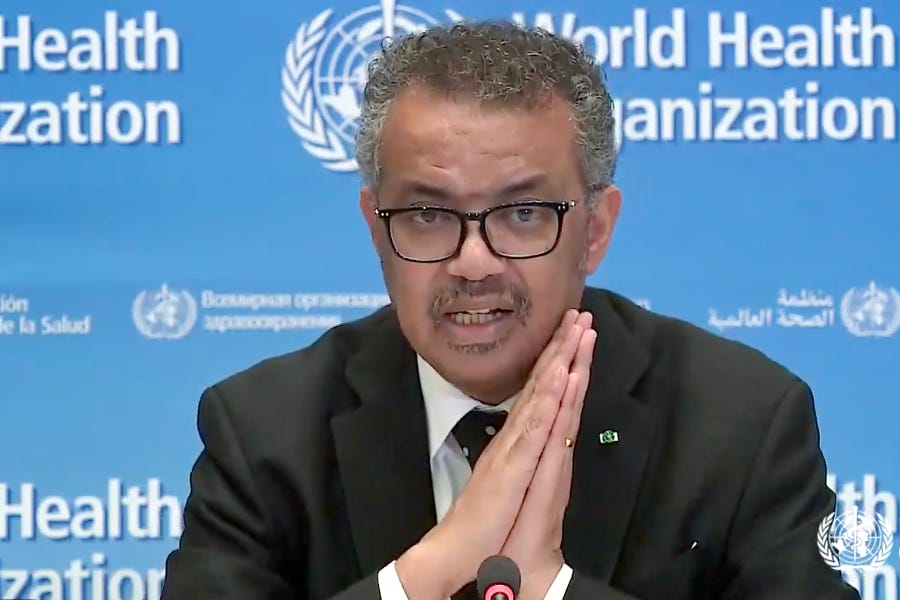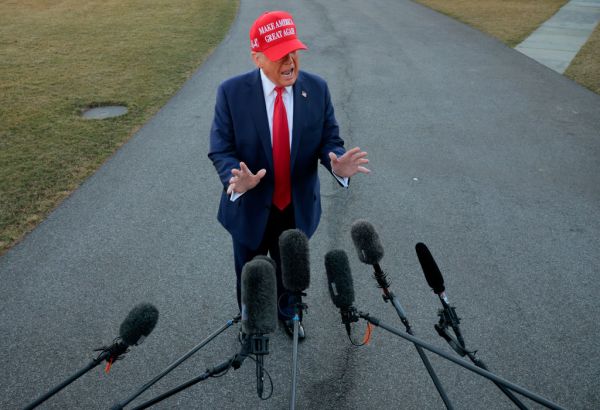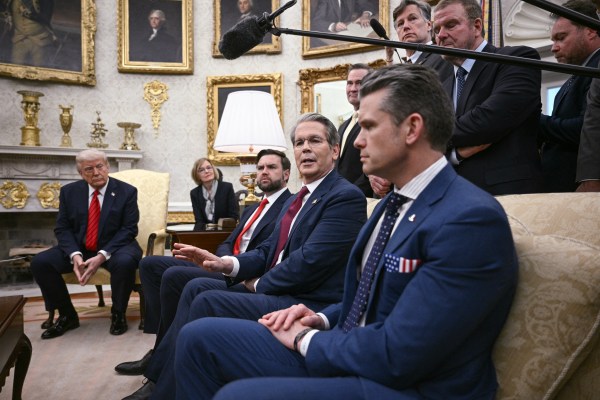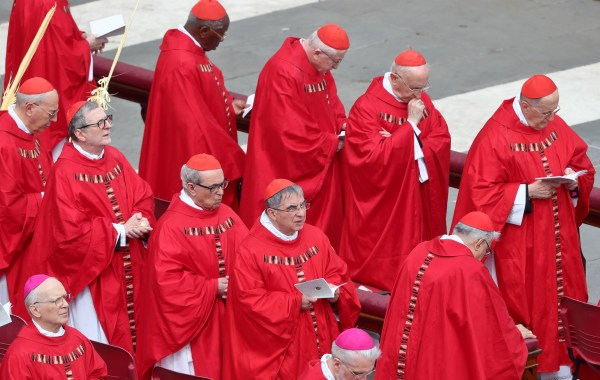United States intelligence services have confirmed what many Americans already suspected. The Chinese Communist Party (CCP) is concealing the truth as to how bad the coronavirus, COVID-19, ravaged the country. U.S. intelligence also suspects that Iran, Russia, Indonesia, North Korea (currently reporting zero cases while sandwiched between China and South Korea), Saudi Arabia, and Egypt also have suspicious statistics.
Beyond those countries, however, sits a more concerning development: The World Health Organization (WHO) is boosting the official claims and numbers from these countries as truth. Amid a pandemic, while it percolated, the WHO pushed the narratives of authoritarian regimes, even when that narrative threatened people around the world. China hid the outbreak of COVID-19, manipulated its numbers, and at no point did the WHO question China or seek the truth.
There are many points of failure throughout the coronavirus pandemic. There are failures of the FDA and CDC and the regulations that delay U.S. response, there is the failure of the media to take the virus seriously early on, and then there are the failings of the president. But even when you adjust for all those failures—the World Health Organization, and its global failure, stand out. WHO hasn’t just failed to act. It’s made an active choice to protect authoritarian regimes like China even as the pandemic is taking lives around the world and doing incalculable damage to the global economy.
Given those facts, it’s time to look at U.S. funding of WHO, what that funding gets us, and what options are available to America.
Who funds WHO? We do.
The United States is the largest funding source for WHO, and global health initiatives in general, in the world. According to the Kaiser Family Foundation, America accounted for 22 percent of WHO’s budget in 2017. The exact amount of money donated year-to-year fluctuates depending on any global health emergencies that require funding (like the current pandemic).
The WHO takes in two types of funding: assessed and voluntary. An assessed amount gets set by population and income and charged by the WHO each year. Voluntary funding is money above and beyond that assessed amount, and also includes donations from private donors. The Bill and Melinda Gates Foundation would be an example of a non-state actor donating to WHO. Approximately 80 percent of WHO’s overall funding comes from voluntary donations. As Kaiser describes it:
Most assessed contributions are considered “core” funding, meaning they are flexible funds that are often used to cover general expenses and program activities. Voluntary contributions, on the other hand, are often “specified” funds, meaning they are earmarked by the donor for certain activities.
Of the more than $500 million, the United States gave to WHO in 2017, more than $400 million of it was voluntary. At the end of 2019, WHO says that the United States was assessed nearly $240 million and gave another $656 million above that amount in voluntary funding. That places America on the hook for almost $900 million for end-of-year 2019, which is only a portion of the more significant global health initiatives pushed by the United States.
The U.S. is the largest funder of global health initiatives worldwide, with $11 billion allocated for such efforts in 2019 alone. The next closest country is the United Kingdom. China, for its part, contributes approximately $86 million annually to WHO. And that amount is raising China’s profile.
China’s makeover of the World Health Organization.
China began flexing its international muscle with WHO when it launched its Belt and Road Initiative in 2015. China increased its funding to the organization and then pushed for its own handpicked leader in 2017: Tedros Adhanom Ghebreyesus.
Tedros was the preferred candidate of the Obama administration and China heading into 2017, but the Trump administration opposed the choice. At the time, the Trump administration was threatening funding cuts, and the Chinese used that threat to claim they were the more secure long-term bet. The Council on Foreign Relations writes of Tedros:
China was also an important ally of Tedros in the WHO’s DG election in 2017. Months before the election, Tedros was invited to speak at Peking University where he called for stronger cooperation between China and the Global South on health issues. China’s support for Tedros paid off immediately. The day after his electoral victory, Tedros confirmed to Chinese state-media that he and the WHO will continue to support the “One China” principle, which recognizes the government in Beijing as the legitimate Chinese government.
Tedros was not without controversy. The New York Times reported in 2017 that Tedros got accused of “covering up three cholera epidemics in his home country, Ethiopia, when he was health minister.” The outbreaks occurred in 2006, 2009, and 2011. The Times learned that “WHO officials have complained privately that Ethiopian officials are not telling the truth about these outbreaks.”
Shortly after winning the post, Tedros tried to appoint Robert Mugabe as a goodwill ambassador. He also appointed a Russian official to the WHO one month after meeting with Vladimir Putin. Sen. Marco Rubio and Rep. Michael McCaul have both blasted Tedros and WHO’s closeness to Beijing during the current crisis.
A microcosm of this transformation was an interview with WHO Assistant Director-General Bruce Aylward, part of the early WHO contingent to China over COVID-19. For those who didn’t see the viral clip, the interview was with Hong Kong broadcaster RTHK. They asked Aylward whether or not WHO would reconsider Taiwan’s membership to WHO. Taiwan has been denied membership due to China.
Aylward sat on the screen and said nothing. When the journalist followed up, Aylward pretended he never heard the question. When she repeated it, he said they could move on instead. And when she asked again, “his connection dropped.” She called back. She didn’t ask the same question, this time she asked Aylward if he could comment on how Taiwan had done in containing the virus (they’ve done quite well). Aylward paused, then said, “Well, we’ve already talked about China…” and then went on to describe what an “amazing job” China has done on the virus.
Note, in the second question, how Taiwan has dealt with the virus, Alyward answered by referring to Taiwan as part of China—denying Taiwan as an independent country. WHO is not neutral, and they’re not avoiding politics. The group consistently picks one side—The CCP.
Tedros protects CCP image over containing the virus.
It is not the first time the WHO has dealt with a pandemic coronavirus. The 2003 SARS pandemic was also a coronavirus, and the WHO dealt with it far differently. With that virus, WHO issued a global alert of a new novel strain of coronavirus afflicting certain persons in China on March 12, 2003. By March 24, the CDC had 39 suspected cases and was sequencing the virus.
On April 2, 2003, the WHO issued its first travel alert in 55 years, telling people not to travel to Guangdong province to avoid the virus. A few days later, the then-head WHO blasted China’s response for covering up the existence of the virus since November of 2002, causing more deaths and a broader spread of SARS. At the time, the WHO hammered China for doing this after 90 deaths, and the head of the WHO said: “that in her five years as head of the WHO this was the first time a disease had spread internationally in this way.”
That swift action stands in stark contrast to the current performance of Tedros Adhanom Ghebreyesus. Instead of a speedy response, travel alerts, and shining a light on corruption, Tedros has praised China every step of the way.
COVID-19 got discovered in China sometime around December 1, 2019. As Jim Geraghty of National Review has thoroughly noted, it was pretty clear by the end of December that human-to-human transmission was occurring with the novel coronavirus. But the WHO would not admit to any such thing—even though they had no firsthand evidence of anything in China.
On January 1, 2020, WHO was telling people they were in constant contact with China. WHO offered to send a team to China to investigate, but that team didn’t show up until February 16. Throughout January, WHO was telling people that they didn’t have clear evidence of human-to-human transmission, that no travel bans or restrictions were needed and in fact such measures would not work.
On January 30, Trump announced travel restrictions from China. Joe Biden called this xenophobic, while Dr. Athony Fauci said the ban was an unquestionably good idea that helped the United States. WHO first recommended the COVID-19 moniker for the virus, when the media was still using names like the “Wuhan flu” or “Chinese virus.” The WHO took no similar actions for Ebola or Zika.
A few days later, in a statement, WHO blasted the United States for closing off travel. “There is no reason for measures that unnecessarily interfere with international travel and trade. We call on all countries to implement decisions that are evidence-based and consistent.” By that point, China had already pivoted to using draconian quarantine measures.
Before anyone from WHO had set foot in China, the New York Times reported that Chinese authorities changed the way they were counting infections. The change occurred days before the WHO visited China. Scott Gottlieb was already questioning the veracity of Chinese reports. And WHO was taking global criticism at this point for praising and repeating Chinese propaganda. One week later, on February 20, after their visit, the WHO started sayingChinese infections were dropping, and China was making good progress. Some observers began pointing out that China’s new numbers were near-perfect matches to a predetermined statistical formula.
The only outside group allowed in to help China investigate was WHO. China announced it was expelling U.S. journalists, and it rejected any input or help from the CDC. Analysis of separate data points out of China— including reporting about the number of urns being ordered by funeral homes and the number of cremations done in a day—suggest a far higher fatality number that China has reported. In Iran, another country that has lied about its numbers, satellite photos suggest mass graves.
It wasn’t until March 12 that the WHO declared a pandemic—wasting three months of valuable time. According to Axios, “A study published in March indicated that if Chinese authorities had acted three weeks earlier than they did, the number of coronavirus cases could have been reduced by 95% and its geographic spread limited.”
What the U.S. can do in response.
The United States is not without tools in breaking China’s hold over the WHO. Whether its money or global power and influence, the United States can bring the WHO back to reality.
The most basic of all tools is the power of the purse in Congress. A majority of the funds sent to WHO consists of voluntary funds, which comes from the appropriations bills that Congress passes every year. The United States could very easily choose to move its voluntary funding away from the WHO and toward similar global health initiatives run by the U.S. or its allies. All that requires is legislation from Congress. Not many people are going to complain about moving $400 million to $600 million away from the WHO and toward helping Americans first.
Second, the United States can work within the framework of the WHO and work toward removing Tedros from office. His term is up in 2022, and America can use its power to push Chinese influencers out of the organization. Individual politicians have laid the groundwork for such a move: Sen. Marco Rubio has called Tedros “either complicit or dangerously incompetent,” Sen. Ted Cruz has called him out on Twitter, and Sen. Ben Sasse has chastised the WHO for “coddling tyrants.”
Each term is for five years, and removing Tedros, along with any other puppets of China, should be a high priority. Tedros was the choice for both the Obama foreign policy crowd and China in 2017—going away from their decisions would be an excellent first step.
Third, the United States could use this moment to strip China of its rights within the WHO. If America and her allies can prove that the Chinese recklessly covered up the spread of this disease, and their malfeasance is the direct cause of so many dead people throughout the world, the U.S. can trigger Article 7 of the WHO constitution. That section reads:
If a Member fails to meet its financial obligations to the Organization or in other exceptional circumstances, the Health Assembly may, on such conditions as it thinks proper, suspend the voting privileges and services to which a Member is entitled. The Health Assembly shall have the authority to restore such voting privileges and services.
China’s decision to cover up a second pandemic, SARS and COVID-19, meets the vague language requirements of “exceptional circumstances.” China’s conduct also violates one of the core preamble sections, which states, “Governments have a responsibility for the health of their peoples which can be fulfilled only by the provision of adequate health and social measures.” It’s not just China’s coverup of the virus; there’s also China’s “help.”
The “help” China is sending around the world is an utter and abject failure. Spain bought 640,000 tests from China. They don’t work. Turkey and the Czech Republic both reported useless tests. The Netherlands received a shipment of 600,000 masks from China, and those didn’t work either. And none of this includes the war of words China got into with the United States when the CCP threatened to cut America off from medical supply lines for medicine and throw the U.S. “into the mighty sea of the coronavirus.” These are not the acts of a country fulfilling the tenets of the WHO, and could describe the “exceptional circumstances” that are harming many countries right now.
If the United States can prove that China’s reckless disregard for this pandemic killed Americans and the peoples of other countries, it would go towards stripping them of power in the WHO. This action would be extreme and cause an international uproar. At a minimum, it would very quickly reveal which nations were firmly within the sphere of China, and those which were not. That, by itself, has value as the U.S. moves toward a more hawkish stance on China in a post-corona world.
Photo of Tedros Adhanom Ghebreyesus by AFP/Getty Images.






Please note that we at The Dispatch hold ourselves, our work, and our commenters to a higher standard than other places on the internet. We welcome comments that foster genuine debate or discussion—including comments critical of us or our work—but responses that include ad hominem attacks on fellow Dispatch members or are intended to stoke fear and anger may be moderated.
With your membership, you only have the ability to comment on The Morning Dispatch articles. Consider upgrading to join the conversation everywhere.